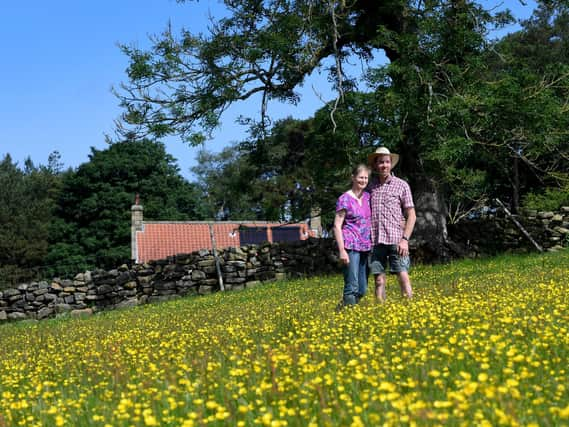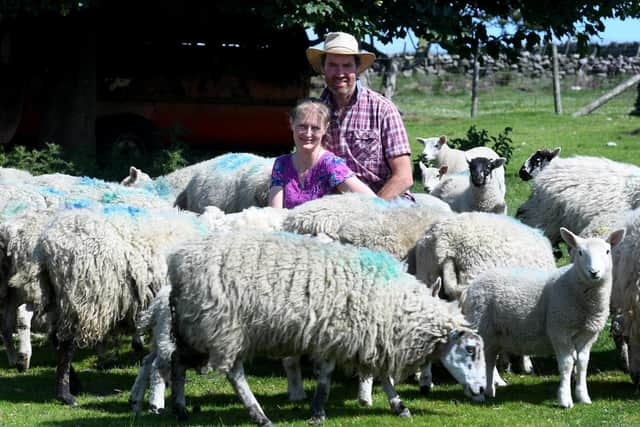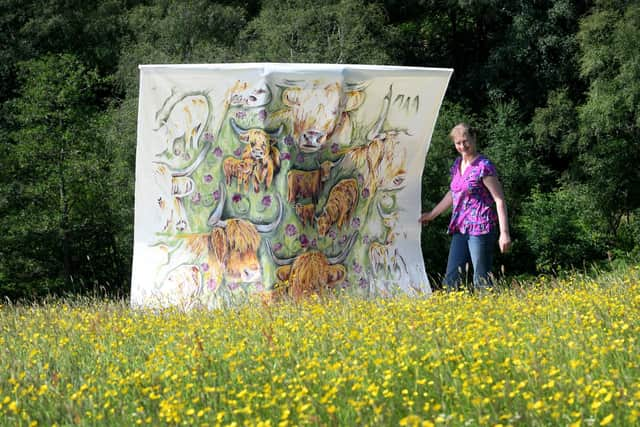Farm of the Week: Biodiversity and running art retreats in the North York Moors once EU payments end


David and Trudy Sanderson have farmed at Bonfield Ghyll Farm in Bransdale for 25 years since arriving with their two-and-a-half year-old daughter Catherine and two-week-old son Robbie. Their third child, Amy, was born at the farm.
David said the farm, tenanted from the National Trust, ticked all their boxes at the time and is still doing so.
Advertisement
Hide AdAdvertisement
Hide Ad“We just fell in love with it when we came for the open day all those years ago. It brought me back into the hills and had a moors stray, something I’d been used to at my dad’s farm in Bilsdale. The moors stray allowed me to get back into sheep. It was also a bigger house than at Low South House Farm further into Bransdale we had also looked at.”


Ironically, David and Trudy have recently taken on Low South House Farm, also from the National Trust, in addition to Bonfield Ghyll, doubling their tenanted land in Bransdale to 260 acres, but not doubling their livestock numbers.
Trudy said that extensification of land and livestock is the name of the game today on National Trust land in Bransdale.
"National Trust have done a lot of amalgamation of farms and don’t want higher stock numbers. We run 400 breeding ewes here at Bonfield Ghyll and on the Moors stray and now a herd of ‘Belties’ at Low South House. Some of the fields there have to be grazed by cattle under a stewardship agreement. That’s why we got the cows. The National Trust don’t want any more sheep than we have currently.”
David said the herd will remain relatively small in number.


Advertisement
Hide AdAdvertisement
Hide Ad“We have been grazing Low South House for two years and now have about 20 cattle, of which there are five cows with two bulling heifers going into the suckler herd this year.
“Ideally, we only want to get to 10 breeding cows as we will be keeping their offspring for two years before going to beef. The cows and heifers are put to an Australian Lowline Angus which is a short-legged bull, extremely thickset, ideal for the terrain.”
Hill sheep had become David’s main farming enterprise after having worked for other farmers and as a lorry driver when he first started out. David said he started with hill sheep on his father’s moorland stray at Coniser Farm in Bilsdale.
David bought 10 cull ewes from his uncle. The following year he went to Bellingham in Northumberland and purchased a flock of Scotch Blackface. David said he is now moving back to the Scotch Blackface at Bonfield Ghyll as part of the Bransdale Moor Scheme in conjunction with Natural England’s stewardship arrangements.
Advertisement
Hide AdAdvertisement
Hide Ad“Our flock at Bonfield Ghyll has been largely North Country Cheviots and I was pretty much getting them to pure, but we’ve had to start going back to horned sheep for our Moors stray at around 1,000 feet above sea level, as the new stewardship scheme needs a percentage of our flock to be that way.
“We are now aiming for 200 purebred Scotch Blackface and 200 Cheviot-cross out of them. Last autumn we bought two ‘Blackie’ tups in addition to our North Country Cheviot tups. Three years down the line we will be getting three-quarter bred Scotch Blackface.”
Trudy has been studying for a BA Hons degree in textile and surface design, firstly at Teesside University and then at the Northern School of Art in Hartlepool. Trudy said the synergy between art and farming has inspired her to become a freelance designer and to be involved in community art projects.
“I have always enjoyed art, including drawing, sewing, anything that is creative. The collection I put together for my final major project and dissertation involved research into extensification farming.
Advertisement
Hide AdAdvertisement
Hide Ad“It’s funny really. When I started my studies it was the farming that was influencing my art, now it turns out the art has influenced our farming. I’ve worked with National Trust consultant David Miller looking at fungi, insects and wildflowers.
“We are now looking at how we can increase the diversity of wildflowers we have at Low South House Farm and we are letting some of our meadows that would normally be harder grazed grow this year just to see what wildflowers are there.
“My dissertation was on ethics and sustainability in the wool industry and I have used wool in my work. I was looking specifically at how extensification farming is better for the animals because they can display their behaviour in a more natural way through being outside in the countryside and consuming the diet they are supposed to eat.”
Trudy was nominated as Student of the Year and attributes her success to her tutors and technicians at Northern School of Art. She now hopes to use her wallpaper and fabric designs that currently include pictures of sheep, cattle, free range hens, floral scenes, wildflowers, insects, birdlife on the moors and all types of wildlife to launch her career in freelance design.
Advertisement
Hide AdAdvertisement
Hide AdThe latest development at Bonfield Ghyll is David and Trudy’s renovation of The Old Back Kitchen, a one-bedroomed rustic holiday cottage attached to their farmhouse, which opened for visitors last weekend.
David said it is the first stage of their new venture into tourism and part of their plan for the future.
“Our second stage will be The Sheep Shelter, which will be a camping barn. Trudy could then also attract aspiring artists to come and learn more from her.
“With the farm payment scheme being phased out in the next five years we are looking at alternative incomes through diversification into tourism. We have some land in Bilsdale but it is nice to be working together at home - and our cattle at Low South House Farm are only a fifteen-minute walk away.”